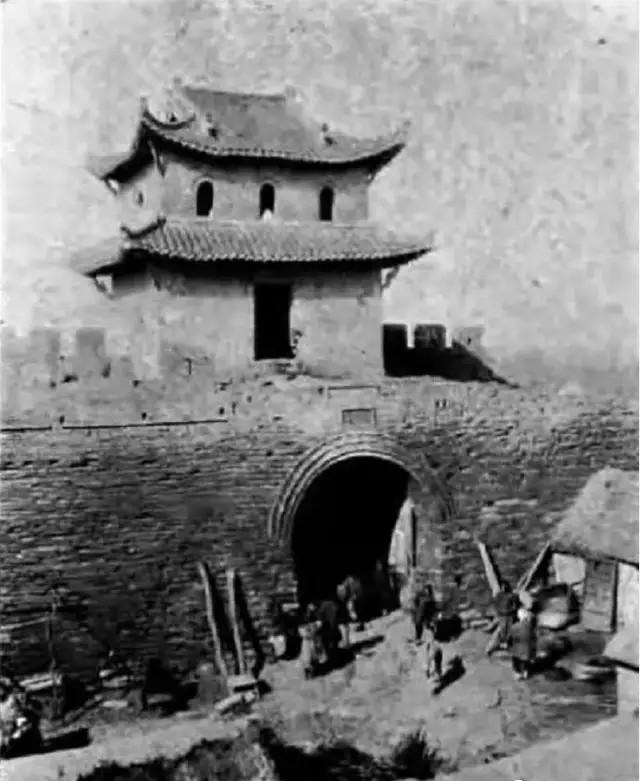You may not think that these photos have spanned a hundred years of history, and the characters in the photos are in the late Qing Dynasty and early Ming Dynasty.

This photo is labeled "NANHSUCHOW EAST GATE".
The translation is: South Suzhou East Gate!
This photo is probably the closest frontal photo to the Wanghuai Gate of Suzhou Dadongmen. The castle tower is two stories, although it is not very large, but it looks simple and elegant. The shape of the ancient city gate under Wanghuai Is exactly the same as the outer gate of the urn city, which is different from the door inside the city. This photo was taken inward from the urn city, and it can be imagined that behind the photographer is the Luzu Temple complex on the urn city.
There are houses in the urn city, and next to the city gate are missionaries from the United States, and the approximate time of this photo is from the late Qing Dynasty to the early Min Dynasty.
Taken in 1915, the fourth year of the Republic of China, this photograph was taken by Japanese officials on a mission to the Jiangbei region of China via Suzhou, where you can see the Lüzu Temple on the city wall and many unclear horse-faced walls on the east wall.
There were many ordinary people outside the urn, it was probably winter at that time, you can see the local people's clothing, and there are also those wearing horse coats, they should play outside the city, bask in the sun, or go to Dongguan Street to buy things.
Lü Zu Ge, also known as Lü Zhenjun Temple, Taoist Quanzhen Sect Taoist Temple, the ancestral name of Lü Zu. Around 1950, it was demolished along with the city walls. Every spring and autumn, the incense is particularly popular, and the good men and women from near and far go to the incense, and the flow is endless. It is said that The Temple of Lü is the largest of the four gates.
This photo was taken in 1916, by the husband of the famous American literary artist Pearl Buck in the southeast of the ancient city of Suzhou, outside the cold spring of Suzhou City, you can see the Tuohe Ancient Bridge, as well as the Kuixing Pavilion above the southeast corner of Suzhou City, and the South City Gate Fucaimen Urn City in the distance.
This is a photo of the vicinity of the Temple of Literature in Suzhou Before being bombed by the Japanese Kou, this very beautiful archway is the DachengFang of the Suzhou Confucian Temple, near Dachengfang, which was the Damin Market and the place where merchants gathered.
The main hall of the National Confucian Temple is called Dacheng Hall, and the archway is called Dacheng Fang. The so-called "Dacheng" is Mencius's comment to Confucius, saying that he is the thinker of Dacheng. Emperor Yuanchengzong thus crowned Confucius as the "King of Dacheng Most Holy Wenxuan", and in the Qing Dynasty he was also named "Dacheng Most Holy Ancestor".
The Temple of Literature, also known as the Palace of Learning and the Temple of Confucius, is located in the middle of the curved Jade Belt Street, and the inner side of the street is the Wall of the Flower Cave.
Because Dongcheng is the closest to Suzhou Railway Station, most of the old photos of Suzhou are concentrated near the Great East Gate.